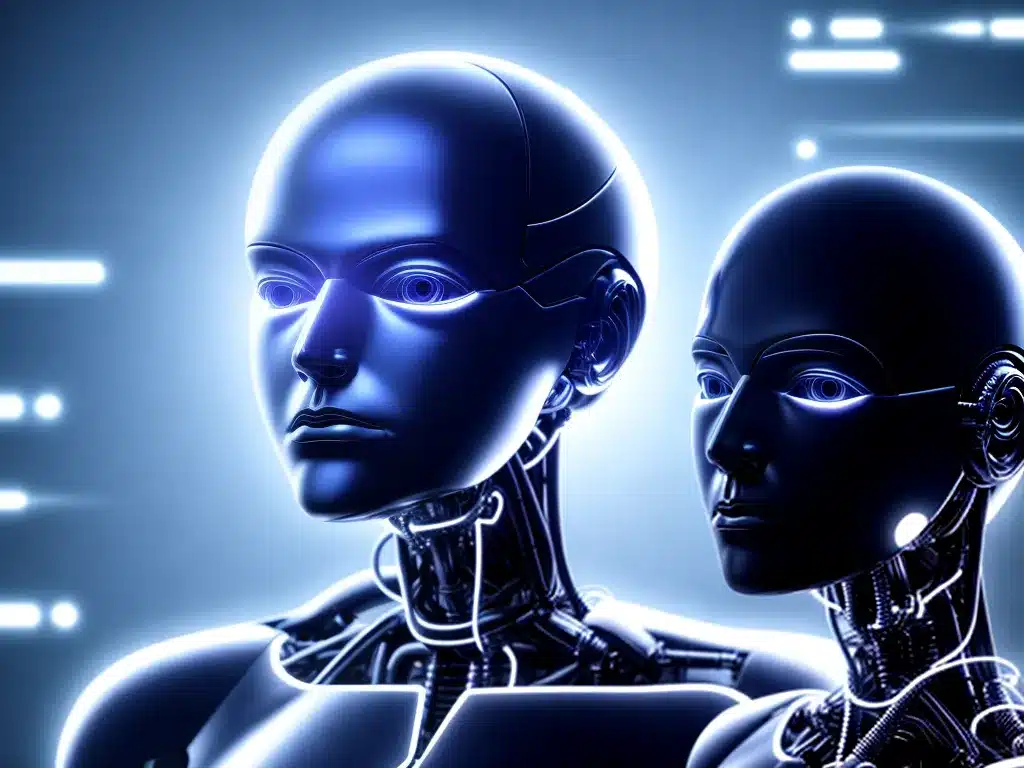
AI: Friend or Foe? The Impact on Jobs
Introduction
The rise of artificial intelligence (AI) is transforming our world. AI systems are now matching or surpassing human capabilities in everything from playing games like chess and Go, to driving cars, diagnosing diseases, and generating art and music. This rapid progress is raising profound questions about how AI will impact jobs and the economy. In this article, I provide an in-depth analysis of the potential benefits and risks of AI for the future of work.
AI Will Automate Certain Jobs, But Also Create New Ones
Many fear that AI will lead to widespread job losses as machines automate human work. It’s true that certain routine and repetitive jobs like cashiers, telemarketers, and data entry clerks are susceptible to automation by AI. However, AI will also create new kinds of jobs. For example, we’ll need more AI trainers, explainers, and maintainers to teach AI systems how to perform, explain their decisions, and prevent failures. New jobs will also emerge in industries transformed by AI, just as the automobile industry created jobs like auto mechanics and ridesharing created gig economy jobs.
While automation will displace some jobs, on net AI is likely to create more jobs than it destroys, just as past waves of automation did not lead to long-term increases in unemployment. But the transition may be painful for some workers in the short-run as their skills become obsolete. Targeted education and retraining programs will be key to ensuring displaced workers have the skills to thrive in newly created AI jobs.
AI Will Change Almost Every Job, Requiring New Skills
Even if AI does not automate your job entirely, it will likely transform your job by automating specific tasks. For example, a financial analyst today relies heavily on data analysis and modeling skills. With smarter AI financial analysis tools, the job may shift to interpreting AI predictions, explaining results, and strategic decision making based on AI insights. This pattern will repeat across many jobs – AI handles routine technical skills, while uniquely human skills like creativity, empathy, leadership and analysis are emphasized.
This will require continuous learning and adaptation from the workforce. Workers must gain skills in harnessing AI tools, and skills that are complementary rather than replaceable by AI. Educational institutions and corporate training programs will need to constantly update their curricula. Lifelong learning will become essential for every worker who wants to remain relevant. Government initiatives like free access to online learning platforms can help democratize access to retraining opportunities.
AI Will Create More Demand for Human Skills Like Creativity and Empathy
AI excels at automating routine and repetitive tasks, but still lags far behind humans in creative and social skills. For example, an AI system can churn out a hundred news articles from earnings reports, but it cannot write a deeply insightful investigative report that synthesizes disparate data sources. Nor can AI empathize with patients like human doctors and caregivers can.
As AI becomes more capable, uniquely human skills will become even more valuable. Organizations and individuals who can harness both human creativity/empathy and AI capabilities will gain a competitive edge. This is already giving rise to hybrid models like AI-human collaborations and gig worker platforms, where humans team up with AI systems to deliver superior results.
Jobs focused purely on creativity and human interaction may even see rising demand and wages. For example, the number of arts, entertainment, and recreation jobs in the US has grown steadily over the past decade, even as routine jobs declined.
Policies to Smooth the Transition for Workers
The march of technological progress is inexorable, but policies can help smooth the transition for impacted workers. Some options policymakers should consider include:
-
Educational subsidies for retraining & lifelong learning: Provide credits or direct subsidies to displace workers seeking to learn new skills demanded in an AI economy.
-
Income support & social safety nets: Strengthen the social safety net through unemployment insurance, income guarantees, and other programs to support workers in transition.
-
Job mobility assistance: Help displaced workers relocate for new jobs through tax credits and other programs.
-
Accountability in automation: Require organizations to provide notice, retraining and transition support when introducing technological displacements above a threshold.
-
Labor representation: Ensure workers have greater voice through unions/representation in automation decisions impacting jobs.
The Outlook for Jobs in the AI Age is Nuanced
The impact of AI on the workforce is complex. It will displace some jobs through automation while creating new kinds of work. Almost every job will change, requiring adaptation and new skills. But human creativity, empathy, analysis and social skills will become even more vital. With prudent policies to support displaced workers, we can ensure the benefits of AI are broadly shared through new prosperous careers and a thriving economy. Rather than a foe, AI can be a powerful friend augmenting and enhancing human capabilities. But we must proactively shape policies to maximize its benefits.












